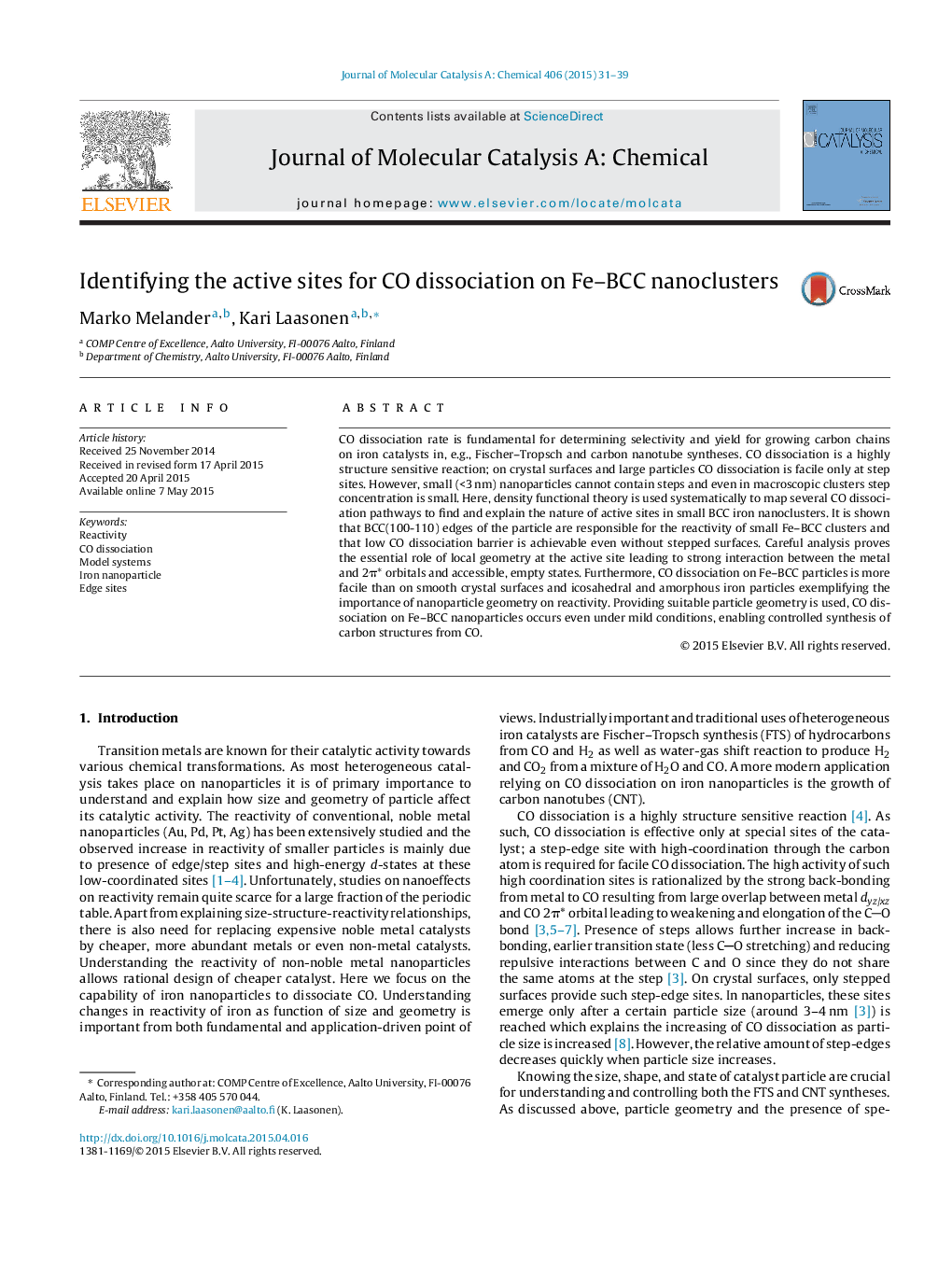| کد مقاله | کد نشریه | سال انتشار | مقاله انگلیسی | نسخه تمام متن |
|---|---|---|---|---|
| 64954 | 48376 | 2015 | 9 صفحه PDF | دانلود رایگان |

• Reactivity of BCC iron nanoclusters has been studied with DFT.
• BCC clusters are more reactive than icosahedral or amorphous clusters.
• Cluster edges are the active sites for CO dissociation on Fe-BCC particles
• Catalytic activity of small, non-stepped clusters is due to proper edge structure.
• Periodic models can capture edge effects provided a suitable structure is used.
CO dissociation rate is fundamental for determining selectivity and yield for growing carbon chains on iron catalysts in, e.g., Fischer–Tropsch and carbon nanotube syntheses. CO dissociation is a highly structure sensitive reaction; on crystal surfaces and large particles CO dissociation is facile only at step sites. However, small (<3 nm) nanoparticles cannot contain steps and even in macroscopic clusters step concentration is small. Here, density functional theory is used systematically to map several CO dissociation pathways to find and explain the nature of active sites in small BCC iron nanoclusters. It is shown that BCC(100-110) edges of the particle are responsible for the reactivity of small Fe–BCC clusters and that low CO dissociation barrier is achievable even without stepped surfaces. Careful analysis proves the essential role of local geometry at the active site leading to strong interaction between the metal and 2π* orbitals and accessible, empty states. Furthermore, CO dissociation on Fe–BCC particles is more facile than on smooth crystal surfaces and icosahedral and amorphous iron particles exemplifying the importance of nanoparticle geometry on reactivity. Providing suitable particle geometry is used, CO dissociation on Fe–BCC nanoparticles occurs even under mild conditions, enabling controlled synthesis of carbon structures from CO.
Figure optionsDownload high-quality image (232 K)Download as PowerPoint slide
Journal: Journal of Molecular Catalysis A: Chemical - Volume 406, September 2015, Pages 31–39